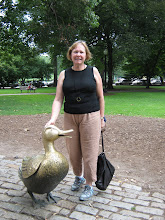It is Maria Montessori's birthday. She was born in Italy in 1870 and died at age 81 in 1952. In 1890 Montessori enrolled at the University of Rome to study physics, mathematics and natural sciences, receiving her diploma two years later. This enabled her to enter the Faculty of Medicine, as one of the first women in Italy, and the first to study at the University of Rome. Montessori stood out not just because of her gender, but because she was actually intent on mastering the subject matter. As part of her work as a doctor she saw a lot of poor people and children.
In 1900 the National League , a "medico-pedagogical institute" for training teachers in educating children with learning difficulties, with an attached laboratory classroom. Montessori was appointed co-director.
In 1906, Montessori was invited to oversee the care and education of a group of children of working parents in a new apartment building for low-income families in the San Lorenzo district in Rome. Montessori, occupied with teaching, research, and other professional activities, oversaw and observed the classroom work, but did not teach the children directly.
In this first classroom, Montessori observed behaviours in these young children which formed the foundation of her educational method. She noted episodes of deep attention and concentration, multiple repetitions of activity, and a sensitivity to order in the environment. Given a free choice of activity, the children showed more interest in practical activities and Montessori's materials than in toys provided for them and were surprisingly unmotivated by sweets and other rewards. Over time, she saw a spontaneous self-discipline emerge.
Maria Montessori believed in the creative potential of every child - and she developed a brand-new approach to education, building on the way children naturally learn. Montessori Schools still exist in many places including Australia.
Even if you know nothing about Montessori Education , today is a good day to read a biography of this amazing woman who was a trailblazer in her time.































































